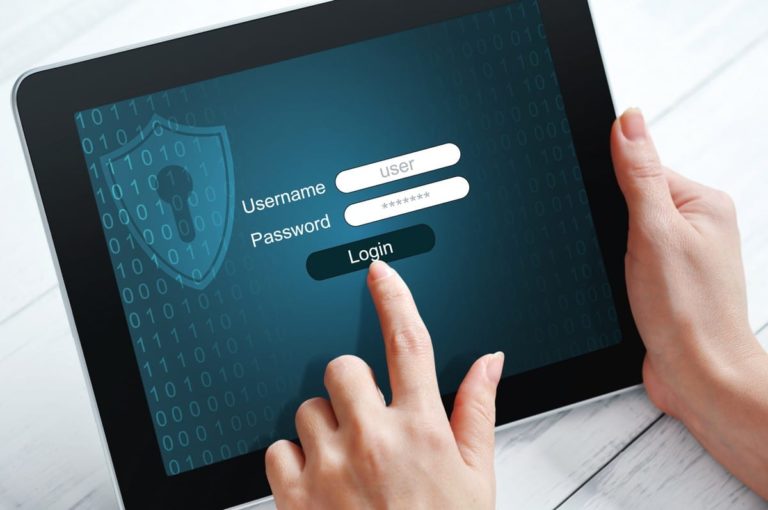Mailsafe our anti-spear phishing solution for your business
Our anti-spear phishing solution protects your organization from targeted phishing attacks

Targeted Spear Phishing or Business Email Compromise (BEC) attacks are the most costly for businesses. The term spearphishing can be translated as “targeted phishing”. Its principle is almost identical to phishing (impersonation of the sender). Spear phishing attacks (BEC) are identity theft scams. Hackers create emails posing as a company executive or business partner, with the aim of stealing money. Sometimes this involves compromising a legitimate business email account, but often it’s done through social engineering. By posing as a CEO, for example, in an email that asks an accounting employee to make a money transfer to a supplier – but to a bank account controlled by the hacker. In another type of spear phishing attack (BEC), hackers intercept supplier emails and substitute their own account numbers for those of the supplier.
Spearphishing is a more sophisticated technique than classic phishing. A spear phishing e-mail is a malicious e-mail in which the hacker pretends to be someone you know, or an establishment you trust (with which you have already collaborated). With spear phishing attacks (BEC), hackers generate a high return on investment from low-tech attacks containing no payload other than social engineering text. Cybercriminals now use sophisticated intelligence to divert payments from salaries or suppliers (invoice fraud)…
What are the most common types of spear-phishing attack ?
President scam / CEO fraud
The first form of spear phishing is the president scam: a company director’s e-mail address is hacked or spoofed, and fraudulent e-mails are sent in his or her name, instructing employees to make immediate transfers to fraudulent sites.
Invoice fraud/supply chain attacks
Compromise of the supplier’s e-mail. In this case, the criminal poses as a supplier by impersonating their legitimate e-mail account. Acting as a seller, the hacker asks the recipient to make payments to an account controlled by the criminal.
Gift card fraud
A variant of CEO fraud, less costly and easier to conceal due to the multiplication of small amounts. A criminal poses as an executive and asks an assistant to buy several gift cards that will be used to reward employees. In order to reward employees as quickly as possible, the bogus “executive” requests the serial numbers of the gift cards, then uses them to make fraudulent purchases.
Direct deposit attacks
The hacker poses as an employee and tricks a member of HR into changing the RIB of his bank account for the payment of his salary.
How does our solution protect your company from spear phishing attacks?
Threats are becoming increasingly sophisticated thanks to social engineering. They are also becoming increasingly difficult to detect by employees and conventional filtering solutions. By merging machine learning with human behavior analysis, Mailsafe provides dynamic protection against identity theft and invoice fraud…
The detection of spear phishing emails is particularly difficult, due to the absence of URLs, attachments or images. However, Altospam’s anti-spear phishing technology relies on machine learning to spot the behaviors and patterns characteristic of this type of attack.
Our machine learning models are constantly being improved. Our anti-spear phishing solution counters spear phishing attacks and identity theft attempts using artificial intelligence technology. By detecting anomalies and using natural language processing techniques, our solution identifies and blocks malicious structures in spear phishing emails. Our anti-spear phishing technology relies on artificial intelligence to identify identity theft attempts and suspicious structures in spear phishing emails.
Our solution uses sophisticated algorithms, sender reputation lists and behavioral analysis techniques to detect signs of spear phishing attacks.
Mailsafe also includes:
Anti-phishing
Our machine learning algorithms perform behavioral, contextual and visual analyses of emails and urls to identify phishing attacks.
Anti-ransomware
Our algorithms and heuristic analyses examine both behavior and code to detect malware and ransomware lurking in emails, attachments and hosted files.
Anti-malware | Anti-virus
Our solution integrates 6 antivirus tools to complement anti-spam filters, as well as 4 innovative technologies to detect unknown viruses.
Anti-spam
Our solution blocks spam before it reaches your mail server, and before it reaches your employees’ mailboxes. Mailsafe combats false positives and ensures a near-zero false-positive rate.
1 in 2 French companies is the victim of a cyber attack
New and increasingly sophisticated phishing attacks are being launched around the world every day. Our Mailsafe solution detects and blocks phishing, spear-phishing, malware, viruses, ransomware and spam threats in real time.

Free trial
Free 15-day trial: test our email protection solutions to find out about attempted intrusions into your mailboxes.

Book a demo
Our email protection solution helps you prevent threats from phishing, ransomware, spear phishing, malware, spam and viruses. Book a time with a cyber expert for a personalized demonstration.

Request a quote
Our rates are tailored to your business and your size. Ask us for a customized quote based on your organization’s needs.
How can you protect your mailbox and your employees from spear phishing attacks?
-
What's the difference between phishing and spear phishing?
Phishing and spear phishing are two forms of cyber attack used to steal personal information, such as login credentials, financial information or other sensitive data. However, they differ in their methods and targets.
Phishing is a general, untargeted attack. Attackers send phishing e-mails en masse to a large number of people, hoping to mislead some of them. These e-mails appear to come from legitimate organizations, such as banks, online services or well-known companies. Phishing e-mails often try to trick recipients into divulging personal information or clicking on malicious links, which can redirect them to fake websites designed to steal their information.
Spear phishing, on the other hand, is a more targeted and sophisticated attack. Attackers carry out in-depth research into their target, often specific individuals or companies, in order to tailor phishing e-mails to make them more credible and convincing. Spear phishing e-mails may contain specific personal or business information about the target, making them more susceptible to deception. For example, an attacker may pose as a legitimate colleague, IT manager or business partner to gain the target’s trust and induce them to divulge sensitive information or perform malicious actions.In short, phishing is an untargeted mass attack aimed at deceiving large numbers of people, while spear phishing is a targeted attack that is tailored specifically to an individual or organization, using personalized information to increase the attack’s chances of success.
-
What are spear phishing attacks?
Spear-phishing is a targeted form of phishing in which attackers specifically target an individual or restricted group with the aim of deceiving them and obtaining sensitive information or performing malicious actions. Here are some common types of spear-phishing attacks:
- Phishing e-mails: Attackers send fraudulent e-mails that appear to come from a legitimate source, such as a company, financial institution or trusted colleague. These e-mails may contain malicious links or infected attachments, prompting recipients to provide credentials or run malware.
- Executive whaling: Attackers specifically target senior executives or people with high authorizations within an organization. They use sophisticated techniques to obtain confidential information, attempt fraudulent fund transfers or compromise corporate security.
- Website cloning: Attackers create fake websites that closely resemble legitimate websites of well-known companies or institutions. They prompt users to enter their credentials, enabling attackers to retrieve them and use them for malicious purposes.
- Vishing phone calls: Attackers use the telephone to contact potential victims, posing as representatives of legitimate companies, government departments or financial institutions. They try to manipulate people into divulging confidential information or making fraudulent fund transfers.
- Attacks on social networks: Attackers use social networks to gather personal information about their targets, creating a credible context for their social engineering attempts. They can use this information to personalize phishing messages and win the trust of victims.
Being vigilant and following good security practices is essential to protect against spear-phishing attacks, such as checking e-mail senders, being wary of unusual or urgent requests, and continually raising employee awareness of the associated risks.
-
What are the consequences of a spear-phishing attack?
A spear-phishing attack can have several damaging consequences for an organization. Here are some of the most common consequences:
- Theft of sensitive information and data: The main objective of a spear-phishing email attack is often to steal sensitive information, such as login credentials, financial information, customer data or trade secrets. If attackers succeed in deceiving recipients and obtaining this information, it can have a significant impact on the organization’s data security.
- Compromised accounts and systems: If recipients fall for the spear-phishing attack and provide confidential information or click on malicious links, their accounts can be compromised. Attackers can then gain access to sensitive systems and data, resulting in a breach of confidentiality and information integrity.
- Ransomware and additional attacks: Email spear-phishing attacks can also serve as an entry point for more sophisticated subsequent attacks. Attackers can use the access gained through the spear-phishing attack to deploy ransomware, malware or other forms of attack on the organization’s network. This can lead to widespread damage, loss of control over systems and disruption of business operations.
- Financial loss: Spear-phishing attacks can also cause financial loss to an organization. This can take the form of theft of funds, fraudulent access to financial accounts or misuse of financial data. In addition, the costs involved in remediating the attack, notifying the parties concerned and implementing additional security measures can also lead to considerable expenditure.
- Reputational damage: A successful spear-phishing email attack can have a significant impact on an organization’s reputation. If sensitive information is compromised or users are fooled by fraudulent e-mails, this can lead to a loss of trust on the part of customers, business partners and the public. An organization’s reputation can be tarnished, with long-term consequences for business relationships and brand image
It is essential that IT security managers implement prevention, detection and response measures to combat spear-phishing email attacks. This includes email filtering solutions, robust authentication mechanisms, regular employee awareness and training, and proactive monitoring of suspicious activity.
-
How can you effectively combat spear phishing attacks?
Here are some steps you can take to effectively combat spear-phishing attacks:
- Awareness-raising and training: Set up regular awareness-raising and training programs for all employees in the organization. Explain the risks associated with spear phishing, the techniques used by attackers and the best practices to adopt to detect and avoid these attacks.
- Advanced e-mail filtering: Use advanced e-mail filtering solutions like Altospam’s Mailsafe to identify and block spear phishing e-mails. Our solution uses sophisticated algorithms, sender reputation lists and behavioral analysis techniques to detect signs of spear phishing attacks.
- E-mail authentication: Implement e-mail authentication mechanisms such as SPF (Sender Policy Framework), DKIM (DomainKeys Identified Mail) and DMARC (Domain-based Message Authentication, Reporting, and Conformance). These protocols verify the authenticity of e-mails and reduce the risk of spoofing, a technique commonly used in spear phishing attacks.
- Monitoring and advanced detection with Altospam Mailsafe: Implement e-mail and network monitoring tools to detect suspicious activity, such as phishing attempts or unauthorized communications. Use advanced detection technologies based on machine learning and behavioral analysis to spot attack patterns and anomalies.
- Vulnerability management: Ensure that the systems and software used in your organization are regularly updated with the latest security patches. Identify and quickly correct known vulnerabilities that could be exploited by spear phishing attacks.


